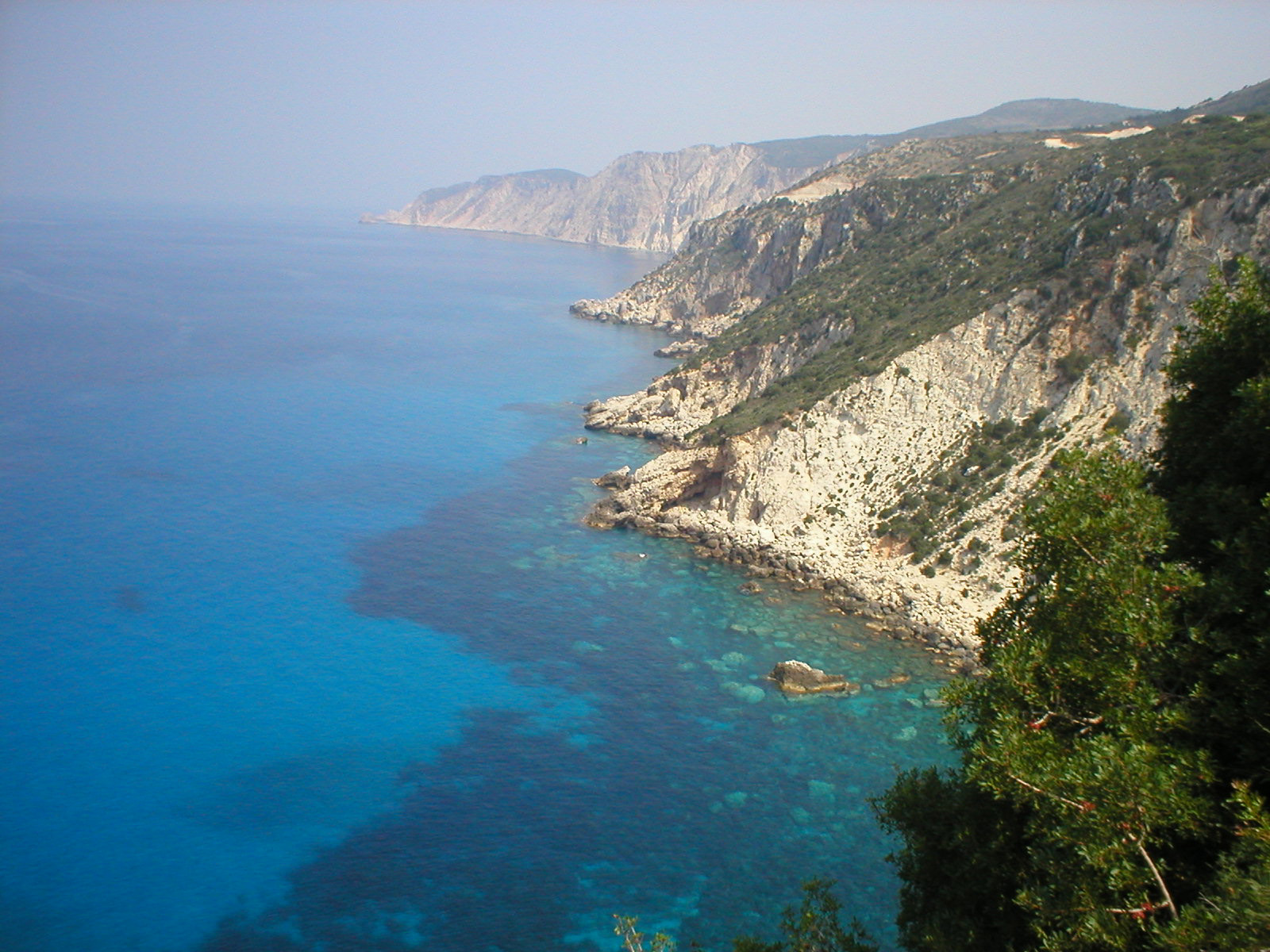story by Helen Hill

The driving mechanisms behind the decadal reversal of the Ionian Sea upper layer circulation recently sparked a considerable discussion in the Mediterranean scientific community. It has been suggested that the reversal can be driven by variations in wind stress curl over the basin, baroclinic dynamics acting within the Adriatic-Ionian System (AISys) or baroclinic dynamics driven by thermohaline properties at the AISys eastern boundary.
In a recent study led by Marco Reale, Italian researchers use the MITgcm to assess the relative importance of remote forcings (wind stress, thermohaline fluxes, thermohaline open boundary conditions) on the vorticity and energy budget of the Ionian Sea.
The driving mechanisms behind the decadal reversal of the Ionian Sea upper layer circulation recently sparked a considerable discussion in the Mediterranean scientific community. In a recent study a team of Italian oceanographers used the MITgcm to assess the relative importance of remote forcings (wind stress, thermohaline fluxes, thermohaline open boundary conditions) on the Ionian Sea’s vorticity and energy budget.

Marco Reale is a physical oceanographer/climatologist. A postdoc between OGS (Istituto nazionale di oceanografia e geofisica sperimentale) and ICTP (international center for theoretical physics), current projects include work studying links between cyclones and extreme events and on coupling a regional earth system model (which includes as ocean component the MITgcm) and a biogeochemistry model. Marco began using MITgcm in 2013 as part of his PhD. When not busy modeling he says he enjoys swimming, reading books (his favorite American writer is Stephen King), watching American TV series, studying foreign languages and dreaming about flying – as he is doing here in this flight simulator!
It has been variously suggested that the decadal reversal of the Ionian Sea upper layer circulation may be driven by variations in wind stress curl over the basin, baroclinic dynamics acting within the Adriatic-Ionian System (AISys) or baroclinic dynamics driven by thermohaline properties at the AISys eastern boundary.
To identify the culprit Marco Reale and co-authors turned to a hydrostatic implementation of MITgcm to successfully reproduce the main features of the Ionian Sea circulation of the period 1987-2008. Through a suite of experiments based on an increasing complexity in the model forcings and domain, the team developed a mechanistic understanding of the AISys dynamics.
Their experiments suggest that wind stress does not play a leading role in the vorticity and energy budgets: Wind stress can reinforce or weaken the circulation but it is not able to reverse its sign. The role of wind stress becomes dominant only in the absence of inflows through the Antikythira Strait and Cretan Passage. Instead, reversals in the Ionian Sea upper layer circulation take place only in the presence of an active boundary on the Aegean Sea/Levantine Basin side and appear to be correlated with substantial exchanges of Availalble Potential Energy between the two basins (as observed at the end of the Eastern Mediterranean Transient). Accordingly Reale et al. argue, from an energetic point of view, AISys can be explained therefore only if the role of the Aegean Sea is explicitly considered.
To find out more about this work contact Marco
This Month’s Featured Publication
- M. Reale, A. Crise, R. Farneti, R. Mosetti (2016), A process study of the Adriatic-Ionian System baroclinic dynamics, Journal of Geophysical research: Oceans (accepted), doi: 10.1002/2016JC011763
Other New Publications this Month
Troy A. Benbow (2016), The effects of double diffusion and background turbulence on the persistence of submarine wakes, Naval Postgraduate School, Monterey, doctoral dissertation.
Melissa L. Breeden and Galen A. McKinley (2016), Climate impacts on multidecadal pCO2 variability in the North Atlantic: 1948–2009, Biogeosciences, 13, 3387–3396, doi: 10.5194/bg-13-3387-2016
Maria B. Broadbridge, Alberto C. Naveira Garabato, A. J. George Nurser (2016), Forcing of the Overturning Circulation across a Circumpolar Channel by Internal Wave Breaking, Journal of Geophysical research: Oceans (accepted), doi: 10.1002/2015JC011597
L. Carone, R. Keppens and L. Decin (2016), Connecting the dots III: Night side cooling and surface friction affect climates of tidally locked terrestrial planets, Mon. Not. R. Astron. Soc., ArXiv: 1605.09545
Yvonne L. Firing, Teresa K. Chereskin, D. Randolph Watts, Matthew R. Mazloff (2016), Bottom pressure torque and the vorticity balance from observations in Drake Passage, Journal of Geophysical reasearh: Oceans (accepted), doi: 10.1002/2016JC011682
Thomas Kaminski and Pierre-Philippe Mathieu (2016), Reviews and Syntheses: Flying the Satellite into Your Model, Biogeosciences Discuss. (under review), doi: 10.5194/bg-2016-237
Piero Lionello, Dario Conte, Luigi Marzo, Luca Scarascia (2016), The contrasting effect of increasing mean sea level and decreasing storminess on the maximum water level during storms along the coast of the Mediterranean Sea in the mid 21st century, Global and Planetary Change (in press), doi: 10.1016/j.gloplacha.2016.06.012
Alice Soccodato, Francesco d’Ovidio, Marina Lévy, Oliver Jahn, Michael J. Follows, Silvia De Monte (2016), Estimating planktonic diversity through spatial dominance patterns in a model ocean, Marine Genomics (in press), doi: 10.1016/j.margen.2016.04.015
M.G. Sotillo, A. Amo-Baladrón, E. Padorno, E. Garcia-Ladona, A. Orfila, P. Rodríguez-Rubio, D. Conti, J.A. Jiménez Madrid, F.J. de los Santos, E. Alvarez Fanjul (2016), How is the surface Atlantic water inflow through the Gibraltar Strait forecasted? A lagrangian validation of operational oceanographic services in the Alboran Sea and the Western Mediterranean, Deep Sea Research Part II: Topical Studies in Oceanography (in press), doi: 10.1016/j.dsr2.2016.05.020
Peng Zhan, Aneesh C. Subramanian, Fengchao Yao, Aditya R. Kartadikaria, Daquan Guo (2016), The eddy kinetic energy budget in the Red Sea, Journal of Geophysical research: Oceans (accepted), doi: 10.1002/2015JC011589
Ibrahim HoteitJinxuan Zhu, Baylor Fox-Kemper, Scott Bachman, Luke Van Roekel, Peter Hamlington, John Taylor, Leif Thomas (2016), Parameterization for Submesoscale-Permitting Simulations: A Study of the Symmetric Instabilities Parameterization (poster)
Do you have news about research using MITgcm? We are looking for contributions to these pages. If you have an interesting MITgcm project (ocean, atmosphere, sea-ice, physics, biology or otherwise) that you want to tell people about, get in touch. To make a post, contact Helen

